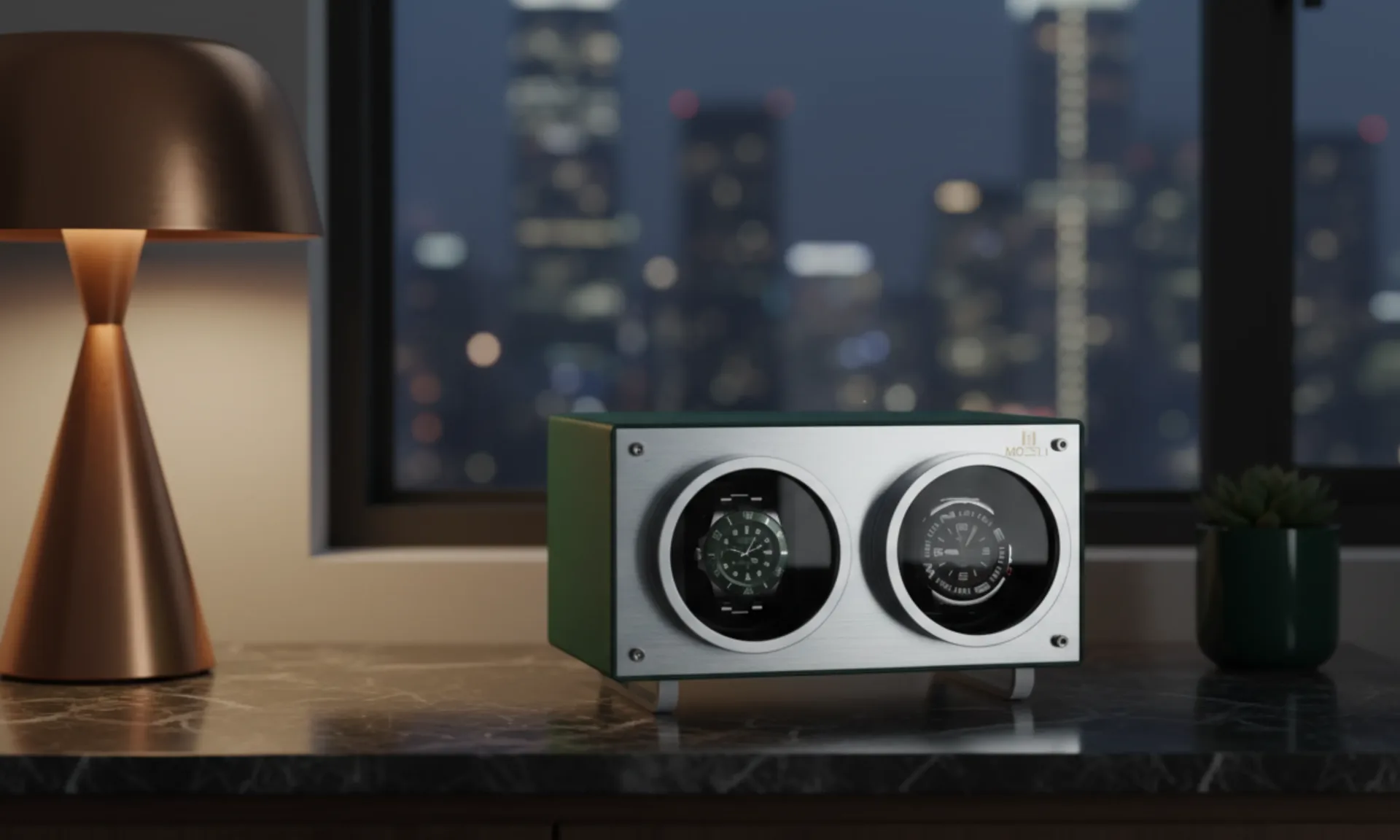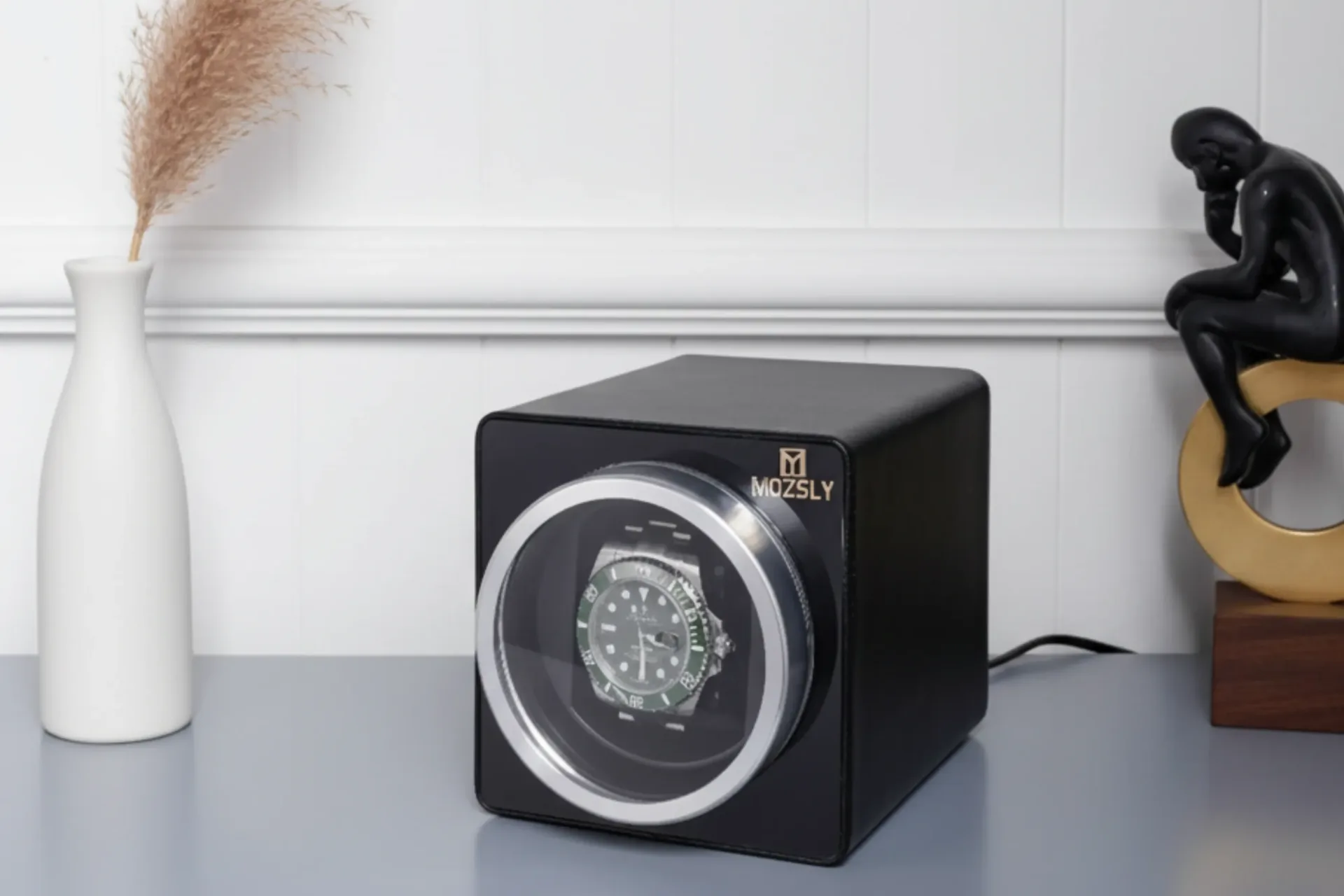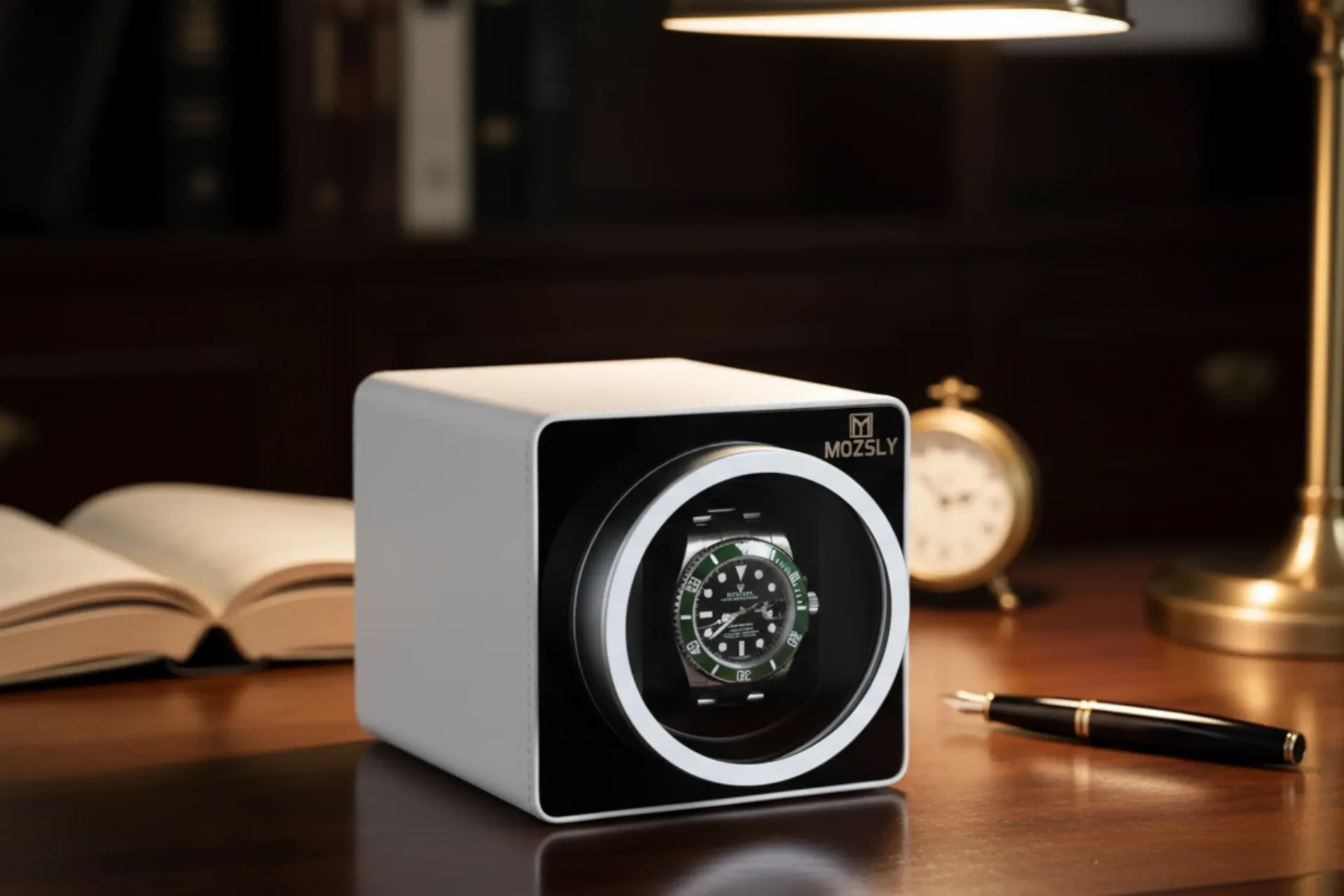Share This Post
Many new owners worry about damaging their automatic watch by hand-winding. I did too when I bought my first one! So, let’s clear it up once and for all.
The Short Answer: No, Hand Winding Won’t Damage Your Automatic Watch
Good news: Hand winding won’t harm a modern automatic watch—as long as you do it gently.
Before we get into the details, understanding when and how to wind your watch can help you extend its life and enjoy it more.
How an Automatic Watch Works (in Simple Terms)
Inside your watch is a small rotor—a weighted wheel that spins when you move your wrist. That motion winds a mainspring, storing energy in what’s called the power reserve.
It’s similar to a phone battery: most automatics store 24–48 hours of energy, while some luxury models can hold up to 70 hours.
When your watch sits still, that power slowly drains.
Why Your Automatic Watch Stops
If you leave it untouched for two days, your automatic watch simply stops.
That’s normal—nothing is broken. It just ran out of stored energy.
You can easily revive it by either hand-winding or placing it on a watch winder.
Three Ways to Keep Your Watch Running
1. Let It Stop — The Low-Maintenance Way
It’s perfectly safe to let an automatic watch stop.
The only inconvenience: you’ll need to reset the time, date, and any complications before wearing it again.
For a simple watch, this is no big deal. For one with a perpetual calendar, it can be tedious.
2. Hand Winding — A Safe, Satisfying Habit
Most automatic watches allow hand winding.
Here’s how to do it safely:
- Remove the watch from your wrist.
- Unscrew the crown (if needed).
- Pull the crown to Position 1.
- Turn it clockwise about 15–20 times.
- Stop when you feel gentle resistance.
That’s all it takes. This simple ritual helps build a connection with your watch’s craftsmanship.
3. Use a Watch Winder — The Effortless Option
A watch winder (also known as an automatic watch winder) is a small motorized device that rotates your watch to simulate wrist movement.
It keeps your watch wound, accurate, and ready to wear.
Consider it a controlled, routine exercise for your watch.
Benefits of using a watch winder:
- Keeps time and date accurate
- Prevents lubricants from settling
- Protects from dust
- Ideal for watches with multiple complications (GMT, moon-phase, perpetual calendar)
When traveling, I keep my automatic watch in a watch winder so it remains accurate upon my return.
How to Hand Wind an Automatic Watch (Step-by-Step)
Take the watch off your wrist before hand-winding.
- Locate and unscrew the crown if necessary.
- Turn the crown slowly clockwise, about 15–20 times.
- Stop when you feel resistance.
- Push the crown back and screw it down.
You may feel a subtle “heartbeat” when it is properly wound.
Pro Tip: Most modern automatic movements use a slip clutch, which prevents true over-winding—so don’t worry.
When You Should Consider a Watch Winder
If any of these sound like you, a watch winder can make your life easier:
- You own two or more automatic watches.
- You travel often
- You have watches with complex settings (annual calendar, moon-phase, GMT)
- You store your watches in a safe or display case.
It keeps each automatic watch ready to wear—no need to reset time or date.
The MOZSLY Automatic Watch Winder Advantage
After testing several brands, I found the MOZSLY Automatic Watch Winder offers standout value:
- Programmable turns-per-day (TPD) options for different watch movements.
- Ultra-quiet Japanese motor—you can sleep next to it.
- Adjustable cushions fit both large and small watches.
It’s elegant, reliable, and affordable—perfect for daily use or travel.
Cost vs. Convenience: Is a Watch Winder Worth It?
Manual winding costs time:
- 1 minute a day = 6 hours a year.
- Miss a day? You reset everything.
- Frequent crown use can wear gaskets.
A good automatic watch winder pays for itself by saving time and protecting your investment.
Common Myths About Hand Winding and Watch Winders
Myth 1: “You can overwind an automatic watch.”
False. Modern movements have a slip clutch that prevents over-winding.
Myth 2: “Using a watch winder wears out the movement.”
Not true. A quality watch winder rotates slowly and gently—just like natural wrist motion.
Myth 3: “You never need a winder.”
It depends. If you have multiple watches or complex features, a watch winder saves you real time.
FAQ: Is a Watch Winder Necessary?
Q: Do I need a watch winder for one watch?
A: Not necessarily. If you wear it daily, your motion winds it automatically.
Q: Can a watch winder damage my automatic watch?
A: No—if you use a quality automatic watch winder and correct settings, it’s completely safe.
Q: How often should I wind by hand?
A: About 15–20 turns before wearing if it has stopped.
Final Thoughts
Your automatic watch is built to be used and enjoyed—it’s tougher than you think.
Whether you hand-wind it, let it rest, or keep it turning on a watch winder, each method is safe.
The key is consistency and gentle care.
And if convenience, accuracy, and protection matter to you, a reliable automatic watch winder like the MOZSLY is a simple upgrade that keeps your collection ticking smoothly. Enjoy the steady movement of your collection.
Related Post's
Featured Video
Provide an email subscription feature for users to sign up for updates.
Follow the world of watches and cigars for exclusive content!
By subscribing to our newsletter, you will be the first to receive notifications of our latest articles, popular posts and special events.









